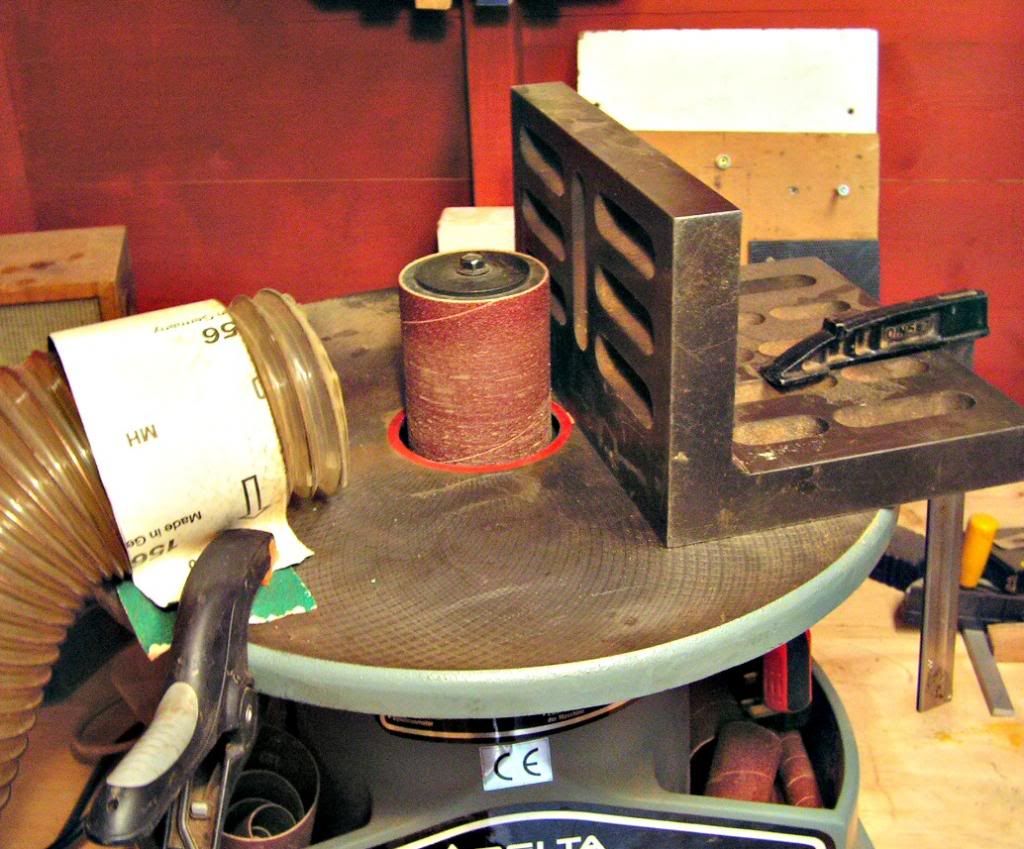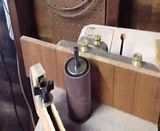Timbuck
Well-known member
I decided to try out another method of sanding the backs of headstocks..This is based on the "Luthiers friend" drum sander device that is used on a Pedestal Drill ..It's just an angle plate mounted on the spindle sander..The feed is applied by gently tapping the back of the Angle plate with a mallet  it works very well but I noticed a potential hazzard which also applies to the "Luthiers Friend"
it works very well but I noticed a potential hazzard which also applies to the "Luthiers Friend" as I fed the headstock into the drum I had a temptation to reach over to the back side of the drum to steady the headstock as it was fed through...I then realised that my fingers would be very close to the rear of the spinning drum..If they touched the drum...:uhoh:They could then get pulled into the device, resulting in some fingers that looked like an uncooked burger (That I'm not now allowed to Display)..So luthiers Beware
as I fed the headstock into the drum I had a temptation to reach over to the back side of the drum to steady the headstock as it was fed through...I then realised that my fingers would be very close to the rear of the spinning drum..If they touched the drum...:uhoh:They could then get pulled into the device, resulting in some fingers that looked like an uncooked burger (That I'm not now allowed to Display)..So luthiers Beware


Last edited:


